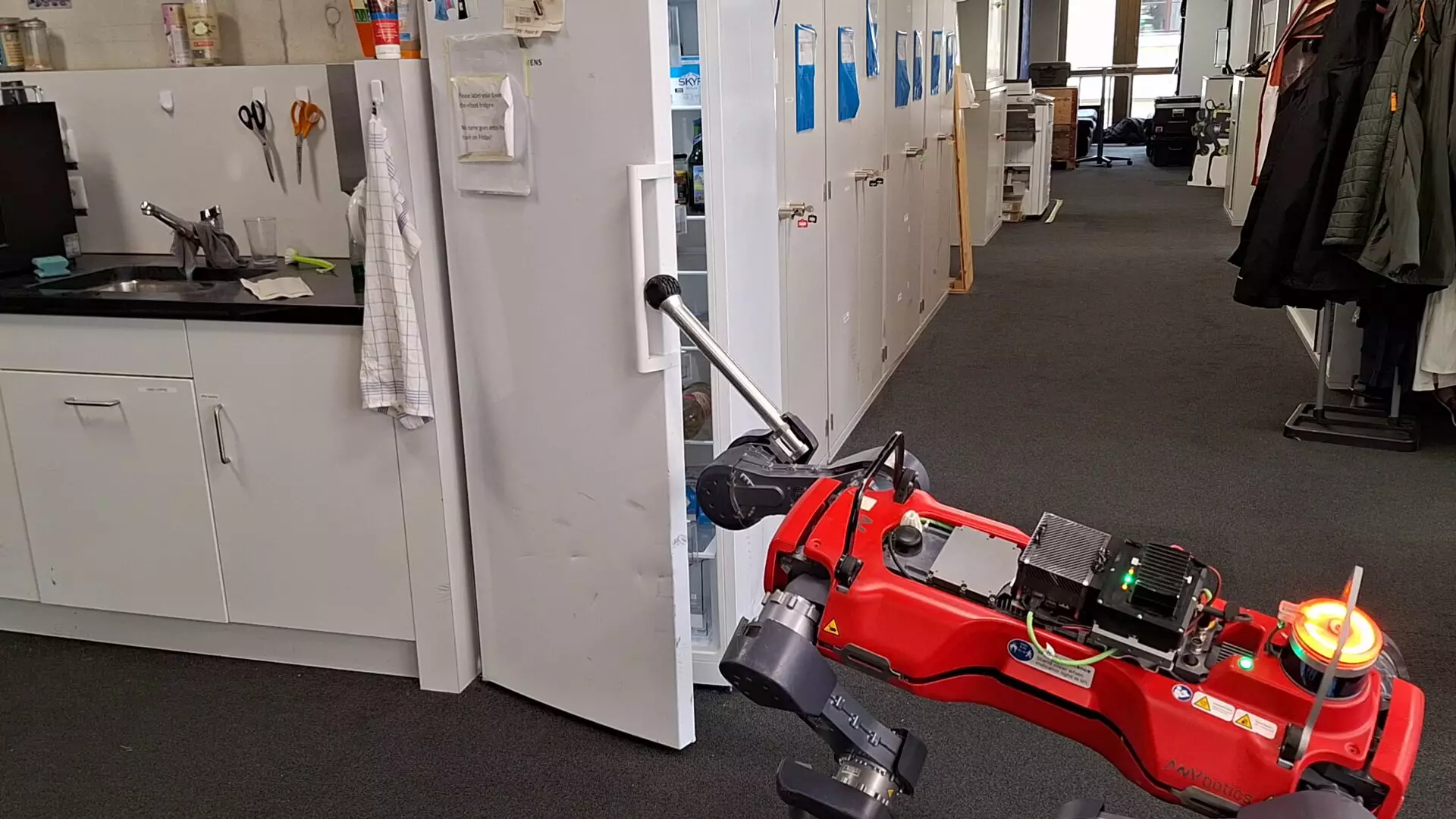Robotic systems have made significant advancements in recent years, moving from rigid robots to more flexible and animal-inspired designs. Among these robots, quadruped robots have shown promise in carrying out simple tasks on the ground, such as exploring environments and carrying objects. However, their ability to interact with objects and humans in their surroundings has been limited, often requiring additional components like robotic arms or grippers. A recent study by researchers at ETH Zurich introduces a new reinforcement learning-based model that could revolutionize how quadruped robots engage with their environment without the need for extra manipulators.
The research team at ETH Zurich focused on creating a versatile approach that would enable legged robots to tackle a broader range of real-world problems. The model they developed utilized reinforcement learning, a well-established technique in the field of robotics. By training the robot to bring its foot to a specific position through simulations, the robot was able to learn and improve its skills over time. Through various simulations with different parameters, the robot became more adept at handling uncertainties it might encounter in the physical world.
Initial experiments conducted by the researchers demonstrated the effectiveness of their model in enhancing the object manipulation capabilities of quadruped robots. The robot was able to complete tasks such as opening a fridge door, carrying objects, pressing buttons, pushing obstacles, and collecting items from the ground. Unlike previous approaches that focused on specific tasks, this model taught robots to utilize their entire bodies when necessary, such as leaning forward to reach a button with one of its feet. The versatility of the model was further highlighted by its ability to hop to reach targets several meters away.
The new computational model developed by the researchers shows great potential for expanding the capabilities of legged robots in real-world scenarios. Once the model is further refined and trained on additional tasks, it could open up a wide range of applications for quadruped robots, such as conducting inspections in warehouses or infrastructure. By increasing the autonomy of the robots and automating more tasks like object grasping and opening different types of doors, the researchers aim to enhance the practicality and usefulness of legged robots in various industries.
The advancements in robotics, particularly in the area of object manipulation by legged robots, hold great promise for the future of automation and artificial intelligence. By developing innovative models that leverage reinforcement learning and whole-body manipulation techniques, researchers are paving the way for quadruped robots to undertake a variety of complex tasks previously thought to be beyond their capabilities. The continued refinement and enhancement of these models will undoubtedly lead to a new era of versatile and autonomous robots capable of revolutionizing industries and improving efficiency in numerous applications.


Leave a Reply